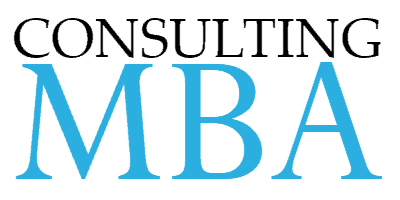Summary
Coaching is a growing field in the world of marketing — and marketers are oblivious. Organizations go through cycles of taking marketing in-house, or outsourcing to agencies. But regardless of where the cycle is, they always invest in their internal teams. Coaching is an excellent way to transfer knowledge from yourself, the coach, to the client’s marketer(s).
Transcript
Hey, David Bradley here. And in this video, I want to talk to you about how to become a marketing coach and let’s begin with what a coach is so that we make sure that we’re on the same page. And a coach in this context is essentially someone who has a certain expertise, a certain skill area that can work with others to help them operate and follow through on whatever that function is while following best practices, while learning, while broadening the scope of their understanding with your guidance as the coach. So that means that you’re helping them do something maybe they’re already familiar with, but they don’t have the level of expertise that you do. It means that you’re going to be able to respond to questions that they have. It means that you’re going to help them through the scary moments that they face. The moments of confusion.
It’s something where you’re really going to build up the knowledge, the skills, the abilities of the person you’re working with. So as a coach, it is typically one-on-one, but it doesn’t have to be a, that comes into the measure of the scope, which is going to relate with what you charge your fees. But the number of people that you work with certainly has an effect on that. Most of the time coaches work one on one, but you might also be a coach that is dedicated to the marketing department and different people might seek you out. The next thing to think about is, well, what does the coaching relationship look like? How available am I going to be? Do I promise nine to five in a certain time zone, I’ll be available if you want to reach out. And then what does that mean? I can’t clear up my entire schedule all day.
But yeah, you can say between nine to five, Monday to Friday, I’ll be available within two hours of you sending me an email. You might also think, well, maybe we should have a set meeting and set meetings are helpful in coaching because it forces that cadence down. And yeah, this is something that I think you should position in a very particular way. So you might say what’s every weekly meeting, a biweekly meeting, you could say monthly that stretches it out a bit for coaching purposes. Typically that’s where you might be fitting more into the advisor side, but that’s a separate topic, but let’s get to this meeting idea. So meetings and coaching typically are a we’ll meet every Tuesday for one hour at this time. And the issue with that is that you go into that meeting, you sit down and if you get everything you get that you need to talk about done and a half an hour.
Now, the other person feels like they just have to fill up that time and things drag out and you’re wasting time. And likewise, on the other hand, if it’s something where you need an hour and a half and you only have an hour, then you’re kind of cutting them off. If you’re really strict about it, you just end the conversation, say, sorry, I need to deal with it next week. That’s what a lot of professional service providers do. And otherwise you’re also having the risk of just kind of going over and that’s cutting into your overall profitability. That’s adjusting what you really have set aside for this anyhow, for your capacity as well as the clients. So instead, I like to say let’s set up a weekly meeting. I’m going to block out an hour and a half in my calendar every week, anyhow, but we’re not going to have any time limit on it.
If we get it done early, great, if we need more time, great, I’ll make myself available. And when you explain that to clients, they typically actually like it because they know, Oh yeah, I’ve been in that situation where I had an hour to fill up and I didn’t need it. And then we kind of just wasted time. And I’ve also been in that situation where I needed to talk to someone more, but the meeting just ended because that’s all we had available. So that is something that I think can use, be used to your advantage. And it’s also something valuable to the client. So it’s a win win. So the other thing to consider is if you’re doing that weekly meeting, the biweekly meeting, or you’re available outside of that as well, for those as needed moments, the ad hoc meetings that come up, all of these things have to be considered in the structure so that you know what you’re selling, you know, what you’re agreeing to.
And likewise, the client knows what they can and cannot do in engaging with you. The services that you provide as a coach are essentially guidance. This is how you do this thing. It’s teaching, making sure that they are able to comprehend and gaining competency in this thing. So they can eventually do it without you essentially sharing those best practices. And ultimately your goal should be to really be one of two things. You’re either becoming obsolete. And that could be over the course of three months. It could be the course of two years, or it could be that you shift into more of an advisory role where the expectation is that you continue on an ongoing basis, but maybe at a more of a heightened level where you’re not coaching, one-on-one, you’re not training, but the executives are coming to you for your insight, your advice and your perspective on the marketing coach level though.
Typically a great coaching relationship could be six to 12 months or so. It always depends on how things evolve. You might find in six months, situations change entirely and you need another six month contract to continue on that new objective. But typically that is the ideal situation. But you can get just as much done in three months as well. You need to be very clear on the important value that you provide. And the important value comes in a couple of different ways. One of the major things is people are looking for marketing coaches because they don’t want American marketing agencies to do the work for them. They don’t want a consultant to come in, set up a plan and head on out. They were looking for someone to develop that marketing department and the marketing department development depends on the systems that they have the processes, but also the expertise of the people.
So if you can come in and work with the people, not just provide a one day training or workshop, but develop them over a longer period of time. That’s something that’s very valuable. And that’s something that is probably the pinnacle of the reason people would want a marketing coach. They want to handle it in house, but they know they need the expertise. Now that goes into the pricing arrangement as well. So as always with pricing, you don’t want to deal with hourly fees or monthly retainers either. You really want to do this project on a quarterly retainer or a project fee over the course of so many months or so many weeks. This is the set price that just works better because it sets up the expectation properly with the client. It sets it up better for yourself and your business. You need to protect yourself and for a client to join for one month and then cancel or pay for one month and then cancel that doesn’t really make sense for you.
It wouldn’t make sense for you to take on even that initial month. And that initial month is when things are busiest, but you’re going to want to look at how many people am I dealing with? What is the scope of this? How often am I meeting? How much time is it really going to take? And what is the impact on the business? And the impact means if they were to go to an agency and hire an agency to do this, how much are they paying for that? And that’s something you could look at the annualized cost of. Well, the agency would have to do it for at least a year or two or three or four or five years be an ongoing expense. So if we’re able to take that in house, how much are they actually saving instead of paying the agency? How much time are they saving?
How much dollars are they saving? If it is an advertising project, it’s very easy to calculate, okay, they have $10,000 a month in advertising spend. If I’m able to make that so much more effective for them, what is the monetary benefit that they would gain? What is the speed advantage of figuring it out now, as opposed to three months from now, six months from now, figuring it out on their own. So there’s a lot of calculation you can do there. Typically you want to charge a few thousand a month, which translates into a quarterly basis. It could be 5,000 to 10,000 a quarter, ideally. If you’re just starting out, it might be something where you accept a less, but I wouldn’t go under 3000 a quarter. Doesn’t really make sense. If you’re working on something that is that significant, then you need the full commitment in that sense.
And it could be something that spans beyond that, but typically that five to $10,000 monthly coaching or quarterly coaching fee is about right. When you shift into more of an advisory role, that’s where you might be looking at that five to 10,000 a month or three to 5,000 as a very basic entry. But for coaching, that is a little bit more guidance oriented, a bit hands off, but still structured. And assuming it’s typically one-on-one, that seems to be about where you want to land. Now, the expectation is that you’re going to be skilled at teaching. You’re going to be skilled at whatever it is. They’re hiring you to guide them along on whatever that functional area is. And that you do keep in mind that your eventual goal is to become obsolete. At least for whatever this purpose is because becoming obsolete means you’re hitting that objective.
You’re helping them be self sufficient in house, and you’re doing your ultimate job as a coach in that sense. So quick recap, the coaches, the guide, the mentor, the Sage, the person that is helping someone along in their path, you’re helping according to perhaps a structure that you agree on that has a weekly, biweekly, monthly meeting, some kind of cadence, I think is more helpful than just saying, reach out whenever it forms a better relationship. And your ultimate goal is that you help them reach whatever their objective is, which usually has you becoming obsolete. That’s fine. That might turn into future opportunities to work with them. It might restructure the deal then, or in the very least you’ve provided amazing value. That’ll turn around and benefit you in multiple ways, referrals, testimonials, and so forth. And you just need to make sure that you’re clear on your value. And if you can do all of that, you can structure it in the right way. You shouldn’t have a relatively profitable service that you can provide. And if you enjoy coaching, you enjoy working with people. One on one, you enjoy the development. It could be a whole lot of fun as well.
Also from Consulting MBA
bnourished Planner Review
I’m a planning and organization nerd. New tools are exciting. New tools mean new learning of ways to be effective, adapting your own style, and growing overall. In this video, I’m breaking down the bnourished planner, which is a new and pretty impressive product.
The Only Way to Offer Discounts to Clients
Discounts are an iffy subject. “Never” is a better answer than “well you should always be ready to offer one!”. There’s a better way to think about and present discounts to clients. Your approach to pricing has a major impact on *profits* of a consulting business. Be smart about how you approach pricing and discounts alike to make your business sustainable.
Do Your Clients See You as a “Peer” or a “Peon”?
Perception is stronger than some like to admit. I challenge you to consider whether you see yourself as a peer or a peon to your clients. And, of course, how your clients see you.
This is pivotal. It isn’t any trick for landing clients or negotiating big deals. No secret marketing hack. The truth is: mindset has a stronger correlation with business performance than any other factor I’ve measured in myself and others.




